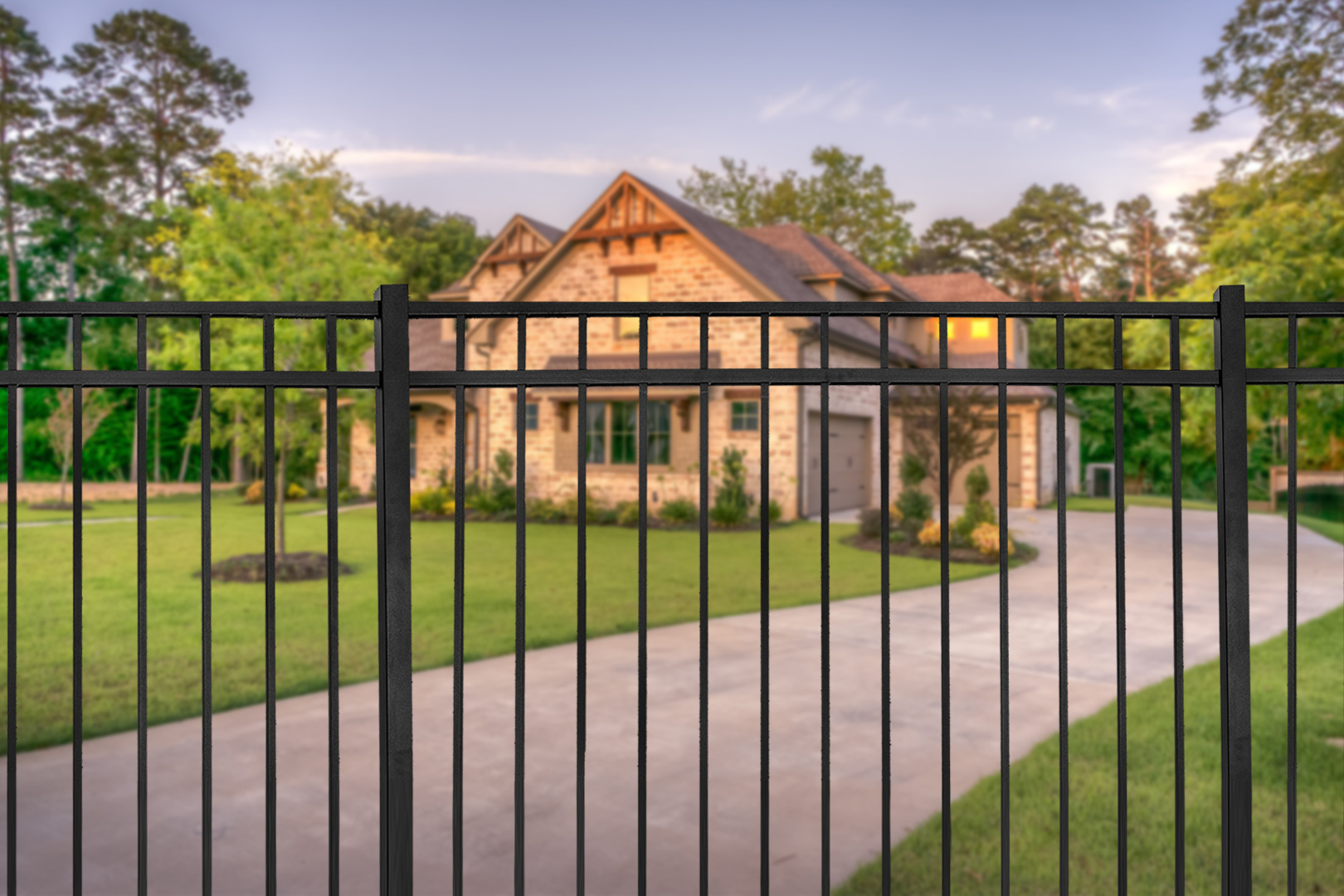All Categories
Featured
Mounting a fencing on your property can include personal privacy, safety, and visual appeal, however prior to you start excavating holes and establishing messages, it's vital to recognize whether you require a permit. The sort of fence you plan to install, where it will certainly be positioned, and regional zoning legislations can all influence the allowing procedure. Not acquiring the necessary licenses could cause penalties or the requirement to remove the fencing. Here's what you need to know to make certain a smooth installment process.
Why Are Allows Required for Fence Setup? Authorizations are crucial for making certain that your fence adheres to regional zoning regulations and building ordinance. These policies aid make sure the safety and security of your building and the surrounding area. Furthermore, allows protect against conflicts with next-door neighbors or local authorities, specifically when it concerns residential or commercial property lines, height constraints, and general layout.
Oftentimes, regional authorities require authorizations to regulate things like visibility at junctions or the proximity of a fence to public areas like roadways or walkways. Authorizations additionally help guarantee that fencings are set up properly and safely, specifically when it pertains to special materials or high fencings.
Typical Sorts Of Permits for Fencing Installment. The sort of fencing you intend to mount and your place will identify which licenses are required. Right here are one of the most usual types:
Structure Authorization. A building license is generally required for fencings that surpass certain elevation limits (typically above 6 feet), are situated near a public roadway or walkway, or are made from certain products. Building permits ensure that the framework satisfies neighborhood building ordinance, consisting of security requirements.
Zoning License. Zoning authorizations are frequently required to guarantee that your fencing adheres to local zoning regulations. Zoning regulations can define where a fencing can be positioned on your property (e.g., along residential or commercial property lines or in front backyards), in addition to established limits on fencing height. These regulations are designed to stop blockages that can impact website traffic safety and security or neighborhood looks.
![]()
Setback Permit. In some locations, you may require an obstacle permit to place your fence a particular range from building roadways, energies, or lines. Obstacles are intended to preserve appropriate area in between structures and residential property boundaries, reducing potential problems with neighbors or public infrastructure.
Homeowners Association (HOA) Authorization. You will likely require approval from the HOA prior to installing a fencing if your property is part of a community regulated by a Homeowners Association (HOA) HOA guidelines frequently control the style, elevation, products, and also color of fences, ensuring that they match the overall visual of the community.
The Process for Getting a Fence Authorization. To acquire a fence authorization, you typically require to contact your neighborhood city or area office. Most locations have a structure department or preparation office where you can look for licenses. The procedure includes finishing an application and giving in-depth information concerning your suggested fence, consisting of:
Fence style (materials, elevation, style) Area on the property. Property line information (for precise positioning) In most cases, a site strategy revealing the suggested fence's setting will certainly be called for. You may likewise require to pay a license charge, which can differ based on location and the intricacy of the project.
Once you send your application, the local authorities will certainly assess it to ensure the fence adheres to local laws. Depending upon your location, you may additionally require to schedule an inspection or enable for a residential or commercial property study.
When Do You Not Need a License? Sometimes, a license may not be called for. Commonly, you may not need a license if:
![]()
The fencing is under a particular elevation (commonly 3-4 feet for front lawns) You're changing an existing fencing with the very same type and elevation. The fence is short-lived (such as a garden fence) Nonetheless, it's constantly a good concept to get in touch with your regional building or zoning department to confirm the needs, as policies can vary.
Consequences of Not Obtaining a License. In some instances, you may require to re-install the fencing according to code, which can be lengthy and costly. Additionally, not adhering to the proper allowing procedure can create problems with next-door neighbors, especially if your fence expands beyond your residential or commercial property line or does not meet elevation or layout demands.
Verdict. Before mounting a fence, make certain you're mindful of the local guidelines and whether you require an authorization. By obtaining the right licenses, you'll ensure that your fence is legally compliant, secure, and totally free from future difficulties.
Why Are Allows Required for Fence Setup? Authorizations are crucial for making certain that your fence adheres to regional zoning regulations and building ordinance. These policies aid make sure the safety and security of your building and the surrounding area. Furthermore, allows protect against conflicts with next-door neighbors or local authorities, specifically when it concerns residential or commercial property lines, height constraints, and general layout.
Oftentimes, regional authorities require authorizations to regulate things like visibility at junctions or the proximity of a fence to public areas like roadways or walkways. Authorizations additionally help guarantee that fencings are set up properly and safely, specifically when it pertains to special materials or high fencings.
Typical Sorts Of Permits for Fencing Installment. The sort of fencing you intend to mount and your place will identify which licenses are required. Right here are one of the most usual types:
Structure Authorization. A building license is generally required for fencings that surpass certain elevation limits (typically above 6 feet), are situated near a public roadway or walkway, or are made from certain products. Building permits ensure that the framework satisfies neighborhood building ordinance, consisting of security requirements.
Zoning License. Zoning authorizations are frequently required to guarantee that your fencing adheres to local zoning regulations. Zoning regulations can define where a fencing can be positioned on your property (e.g., along residential or commercial property lines or in front backyards), in addition to established limits on fencing height. These regulations are designed to stop blockages that can impact website traffic safety and security or neighborhood looks.

Setback Permit. In some locations, you may require an obstacle permit to place your fence a particular range from building roadways, energies, or lines. Obstacles are intended to preserve appropriate area in between structures and residential property boundaries, reducing potential problems with neighbors or public infrastructure.
Homeowners Association (HOA) Authorization. You will likely require approval from the HOA prior to installing a fencing if your property is part of a community regulated by a Homeowners Association (HOA) HOA guidelines frequently control the style, elevation, products, and also color of fences, ensuring that they match the overall visual of the community.
The Process for Getting a Fence Authorization. To acquire a fence authorization, you typically require to contact your neighborhood city or area office. Most locations have a structure department or preparation office where you can look for licenses. The procedure includes finishing an application and giving in-depth information concerning your suggested fence, consisting of:
Fence style (materials, elevation, style) Area on the property. Property line information (for precise positioning) In most cases, a site strategy revealing the suggested fence's setting will certainly be called for. You may likewise require to pay a license charge, which can differ based on location and the intricacy of the project.
Once you send your application, the local authorities will certainly assess it to ensure the fence adheres to local laws. Depending upon your location, you may additionally require to schedule an inspection or enable for a residential or commercial property study.
When Do You Not Need a License? Sometimes, a license may not be called for. Commonly, you may not need a license if:

The fencing is under a particular elevation (commonly 3-4 feet for front lawns) You're changing an existing fencing with the very same type and elevation. The fence is short-lived (such as a garden fence) Nonetheless, it's constantly a good concept to get in touch with your regional building or zoning department to confirm the needs, as policies can vary.
Consequences of Not Obtaining a License. In some instances, you may require to re-install the fencing according to code, which can be lengthy and costly. Additionally, not adhering to the proper allowing procedure can create problems with next-door neighbors, especially if your fence expands beyond your residential or commercial property line or does not meet elevation or layout demands.
Verdict. Before mounting a fence, make certain you're mindful of the local guidelines and whether you require an authorization. By obtaining the right licenses, you'll ensure that your fence is legally compliant, secure, and totally free from future difficulties.
Latest Posts
Transform Your Home with Sturdy Hardwood Flooring from Carpet Interiors Floor & Home
Published Apr 19, 25
1 min read
A Waterside Oyster Experience
Published Apr 19, 25
1 min read
Full Circle Strategic Marketing - Skyrocket Sales with Performance-Based Marketing
Published Apr 19, 25
2 min read
More
Latest Posts
Transform Your Home with Sturdy Hardwood Flooring from Carpet Interiors Floor & Home
Published Apr 19, 25
1 min read
A Waterside Oyster Experience
Published Apr 19, 25
1 min read
Full Circle Strategic Marketing - Skyrocket Sales with Performance-Based Marketing
Published Apr 19, 25
2 min read